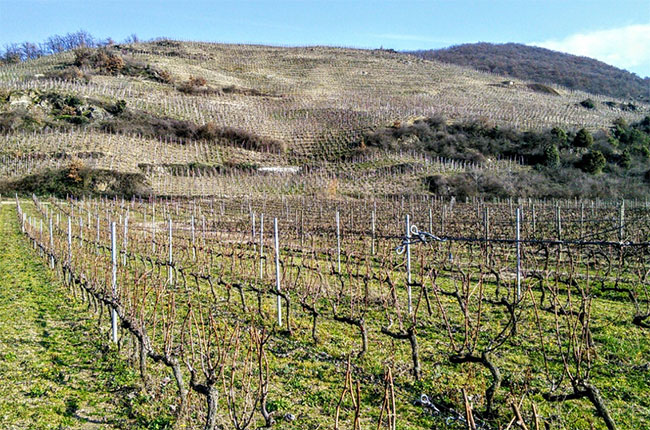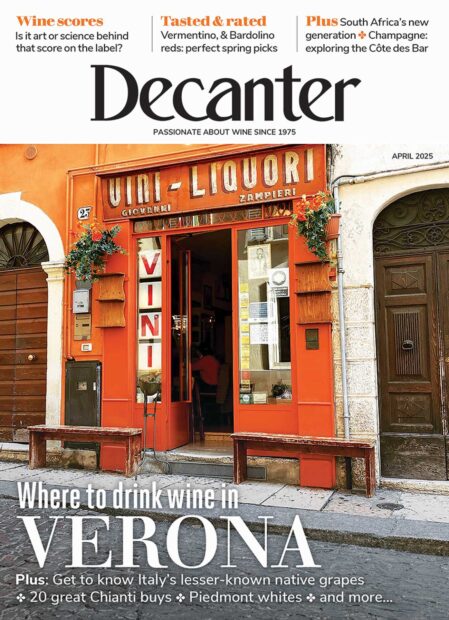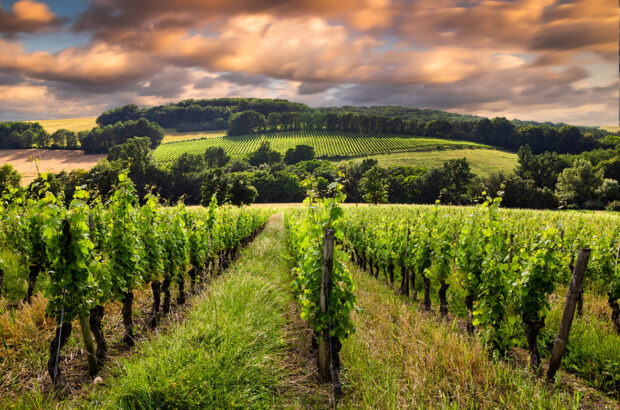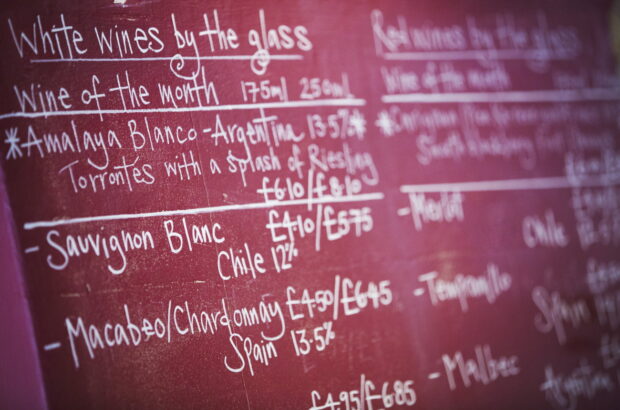Andrew Jefford cruises Crozes and discovers more than he expected...
Now here’s a thing. According to grower Yann Chave and négociant Jacques Grange of Delas, co-presidents of the Crozes-Hermitage AOP, it is (in the words of the former) “the most successful appellation in either the northern or southern Rhône,” judged by paucity of available stocks. The reds are flying (on the back of the very fine 2015 vintage), while stocks of white wine sell out within six months of the harvest. “There is no longer,” according to Grange, “a single drop of white wine or kilo of white grapes in Crozes available for anyone who doesn’t grow them.”
Wow! Why so successful?
First of all, no one has any difficulty in pronouncing or remembering the word ‘Crozes’, and it is linked by a helpful hyphen to one of the Rhône’s most famous names, that of Hermitage, which Crozes surrounds on three sides. The village of this name received its original AOC back in 1937, but the key change came when it was joined by 10 other communes in 1952. (Any unhappiness Hermitage growers might feel about this is quickly assuaged by the purchase of a few hectares next door.)
Secondly, unlike all of its Northern Rhône peers, Crozes has volume and mass: 1,633 ha at present, producing around 10 million bottles a year. Chave says it will surge past 1,700 ha in 2017, with 2,000 ha in its sights before long. Grange, indeed, claims there are at least 1,000 ha of truly qualitative unplanted vineyard land in Crozes, potentially making it (in the world of David Quillin of the Cave de Tain) “the Châteauneuf of the north.”
A third reason for the success is that Crozes (again in contrast to most of its neighbours) hits the value solar plexus. At the top end, the very best 30-euro Crozes reds and whites are better than the weakest 40-euro Hermitage or Côte Rôtie wines, and offer an impressive short cut to Northern grandeur. Good quality inexpensive Crozes, meanwhile, will smother you pleasurably in fruit, fruit, fruit. It’s not yet a consistent appellation, though – so it’s best to walk hand-in-hand here with a merchant or a grower you trust; and it’s also an appellation which varies strikingly depending on the vintage (so take full advantage of 2015 and 2016).
-
Look out for the April 2017 issue of Decanter magazine, out Wednesday 1 March, for many high scoring Rhône 2015 wines. Subscribe to Decanter.
Then comes the less obvious but more intriguing answer. For this, let’s turn first to peach and apricot trees.
Almost all plantable agricultural land hereabouts once carried fruit trees on it – apricot trees in the north of the appellation, and peach trees in the south. Fruit trees remain important here – some 277 of the Cave de Tain’s 300 growers have peach or apricot trees as well as vines – but they are in sharp decline, in part due to the spread of plum pox virus (called sharka in French). Peach trees, in particular, needed copious nitrogen and potassium, and the potassium residues in the soils of the most widely planted zone of Crozes-Hermitage, the plain of Chassis in the south of the appellation, tend to produce higher pH wines than is generally the case in the northern Rhône. “This gives,” says Yann Chave, “a style of wine which people like – much less austere than in other appellations like St Joseph.”

The soils of Chassis in Crozes. Credit: Andrew Jefford.
“Not everyone likes the austere, high-acid style,” confirms Grange. “The Chassis zone gets you away from that. The balance is not linked to acidity in southern Crozes so much as to tannin, fruit, salinity and other elements.” I would echo these remarks, speaking as someone with an acid-shy, tannin-friendly palate. (David Quillin points out, furthermore, that soft-fruit growers tend to make very good wine-growers, as their former livelihoods depended on the physical quality of their fruit. They work, in other words, with ideal attention to detail.)
The plain of Chassis, though, isn’t everything. John Livingstone-Learmonth rightly stresses (in his exhaustive 2005 book The Wines of the Northern Rhône) the differences between the vineyards of this appellation’s 11 constituent villages, and provides a useful profile of each. In particular, the three ‘northern’ villages of Serves-sur-Rhône, Erôme and Gervans, plus parts of the village of Crozes-Hermitage itself, are detached fragments of the Ardèche granite uplands which now find themselves on the ‘wrong’ side of the river, just like the Hermitage parcels of l’Hermite and Bessards.

Steep, sloping vineyards in Larnage, Crozes. Credit: Andrew Jefford.
The village of Larnage is famous for its often steeply sloping vineyards of kaolin-rich clay (used for making Le Panyol wood-fired ovens as well as for growing vines), while Mercurol has the famous Coteau des Pends vineyard ridge, reputedly offered its own appellation in the 1930s when its white wines sold at the same price as white Hermitage (the offer was declined in the interests of a simple life).
Even the comfortable, voluminous plain of Chassis itself (divided among the communes of Tain, Mercurol, Chanos-Curson, Beaumont-Monteux, Pont de l’Isère and La Roche de Glun) is various, based in part on whether its rolled pebbles and their soil matrix were derived from the Rhône (red soils) or the Isère (brown soils). All of this diversity is reflected in a panoply of lieux-dits, many of which are beginning to be used on wine labels. The village names themselves, by contrast, are banned from use on labels – so the Cave de Tain has to resort to coded descriptions like ‘BM’ (for Beaumont-Monteux), LA (for Larnage) and Nord (for Gervans and surroundings) for the series of sub-regional or “village” wines it has produced since 2012.

The steep granite soil vineyards of Gervans. Credit: Andrew Jefford.
Crozes not only has some growing to do, but I suspect that growers and drinkers alike have barely begun to tease out all the nuances and differences which this vast expanse of vineyard land still holds in secret, like a treasure map inside a pirate chest. In half a century, its finest wines may not only be accepted as a match for some of their northern Rhône peers, but Crozes may also be one of France’s biggest quality appellations. Full speed ahead.
The Tasting
I blind tasted 60 red Crozes-Hermitage wines from the outstanding 2015 vintage during a recent visit, and will summarise the results with tasting notes in a future blog. Here, though, are ten white Crozes-Hermitage (from 24 wines blind tasted) from 2015. White Crozes has traditionally been based on Marsanne with a smaller complement of Roussanne, and could in the past be clumsy or heavy when vinified, as it used to be, as a kind of transgender red. Newer approaches tend to emphasise the blossomy freshness of Roussanne in partnership with the almondy marrow of Marsanne, and growers increasingly vinify Marsanne so as to emphasise its freshness and minimise its bitter notes. Oak is used with increasing discretion, and most growers recognise that a blocked malo is not a panacea, and that letting the wine go through malo may in fact provide more development and length.
Ten white Crozes-Hermitage 2015 wines
Domaine Aléophane
Natacha Chave’s blend of half Marsanne, half Roussanne is fragrant and honeyed on the nose and rich, full and mealy on the palate with nougatine and orange-peel notes and a faintly saline edge. Half-fermented in demi-muids, the oaking is subtle; completed malolactic makes for a vinous finish. 89
Yann Chave
This Marsanne-Roussanne blend, grown in the south of the appellation, has a pretty, heather-honey scent and a cascade of white almond, nougat and gentle apricot flavours with a blossomy lift. It’s detailed and disarming in aromatic terms, yet has plenty of structure and drive, too. 92
Domaine du Colombier, Cuvée Gaby
An outstanding white Crozes, based on old-vine Marsanne grown on the Coteau des Pends: sweet, generous scents of ripe summer fruits and honeysuckle, with succulent, rich, glycerous flavours with that same arresting combination of lush fruit and flowers. Long, pure. stylish and assured, with a vinous finish. 93
Fayolle Fils et Fille, Les Pontaix
This lieux-dit just to the north of the village of Crozes-Hermitage itself has complex, mixed soils, and Laurent Fayolle and his sister Céline Nodin have their old-vine Marsanne on a patch of white decomposed granite. Some 20 per cent of oak fermentation fills out the fruit to ample, honeyed, mellow effect, yet the vineyard has left a fresh sappiness here too which makes for a very well-balanced white. 92
Domaine du Melody, Chaos
Made from a blend of 70 per cent Roussanne grown in Larnage blended with 30 per cent Marsanne from behind the hill of Hermitage, this is a skilfully oaked white with hints of peach and hawthorne flower mingling with cream, and deep, resonant flavours which turn the fruit allusions towards soft apricot, almond and cashew. 91
Domaine Mucyn, Les Charmeuses
Incomers Hélène and Jean-Pierre Mucyn’s white is a blend of 60 per cent Marsanne with Roussanne, grown and loam and loess. It’s fragrant and southern in its aromatic style, hinting at gentian and aniseed; there’s light lemon-peach fruit on its pretty, pert palate, best enjoyed in the flush of youth. 88
Domaine Les Quatre Vents, La Rage
A curiously named wine (la rage means rabies), but worth a look for those who hanker after the gold and the richness of a classic, fully ripened Marsanne style: plump, lush, satisfying, with some of the salty edges sometimes found in wines from the Chassis plain. Nothing to grimace about here. 88
Domaine de Remizières, Cuvée Particulière
This pure Marsanne grown on limey-clay soils is classically refreshing: white flowers on the nose, white almonds on the palate, with ample, vinous drive. In this vintage I preferred it to the weightier Cuvée Christophe, made with the fruit of older vines (including 15% Roussanne) and fully oak-fermented. 89
Domaine Rousset
This Marsanne-dominant wine is grown on the steep granite slopes of Erôme and Gervans. Fresh white almond scents and a taut, tight, elegant palate with considerable poise and a bright acid structure, this is a white Crozes which you might almost guess came from St Joseph across the river. The sinewy, sappy flesh evokes marrow and fennel as much as fruit. 90
Cave de Tain, Grand Classique
The Cave de Tain produces almost half of the entire appellation of Crozes-Hermitage, so it’s a cause of celebration that it does so adeptly and proficiently. This pure Marsanne is made in a lighter, fresher style than many of its peers – but, in the Cave de Tain’s hands, that restraint works well: a gust of blossom on the nose, and tingling white summer fruits on the palate with a lemony core. Sappy, fresh and poised, without a trace of bitterness. 90
More Andrew Jefford columns on Decanter.com:

Jefford on Monday: Enigma Variations
As I took a few pictures (like the one below), I felt puzzled. I tasted some of the wines from

Jefford on Monday: The Crozes crusader
Andrew Jefford hunts down outstanding value...

Jefford on Monday: Beyond best
Andrew Jefford is giving up the chase...

Jefford on Monday: Scoring for value
Andrew Jefford says anything else is just not possible...

Jefford on Monday: Why I’m not a wine-grower
Andrew Jefford provides a reality check...







